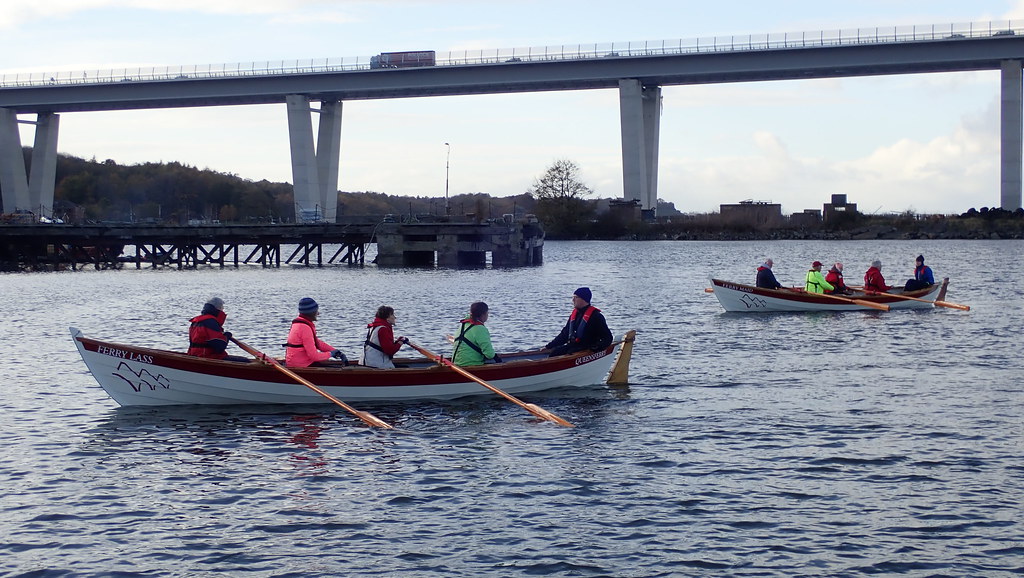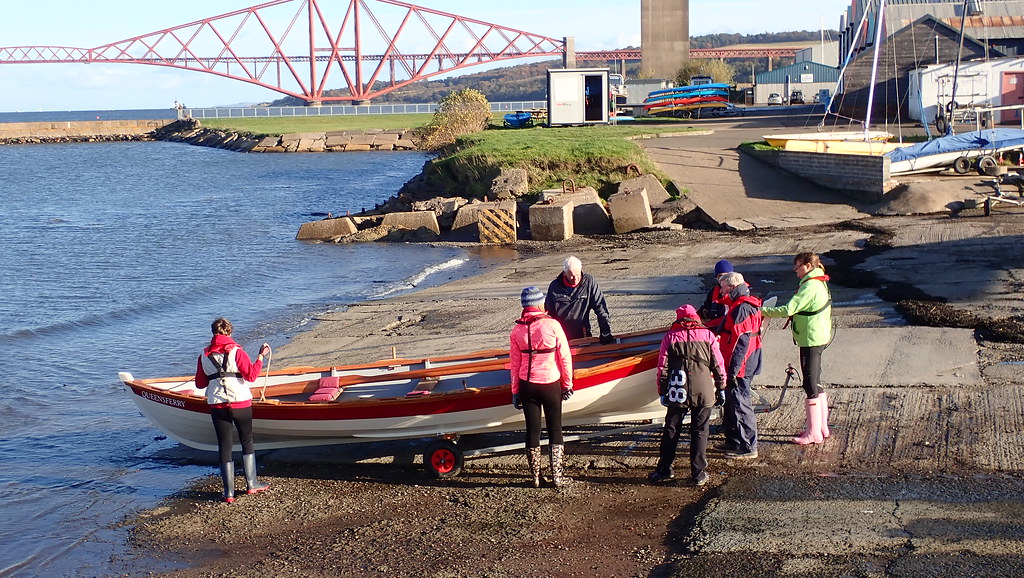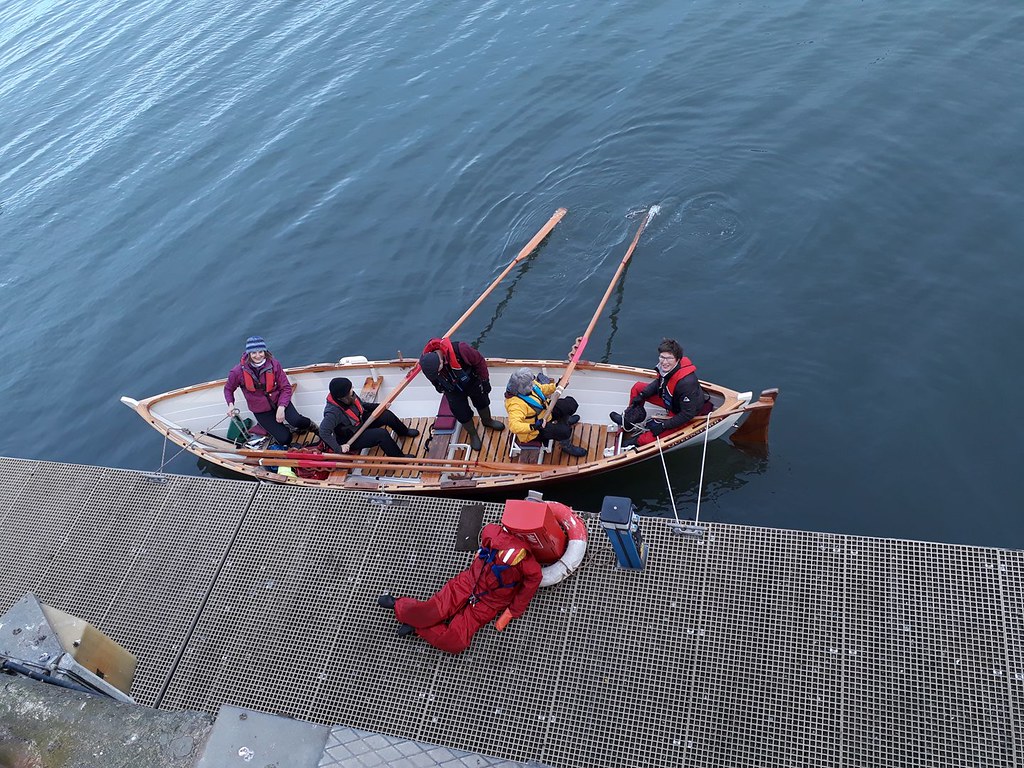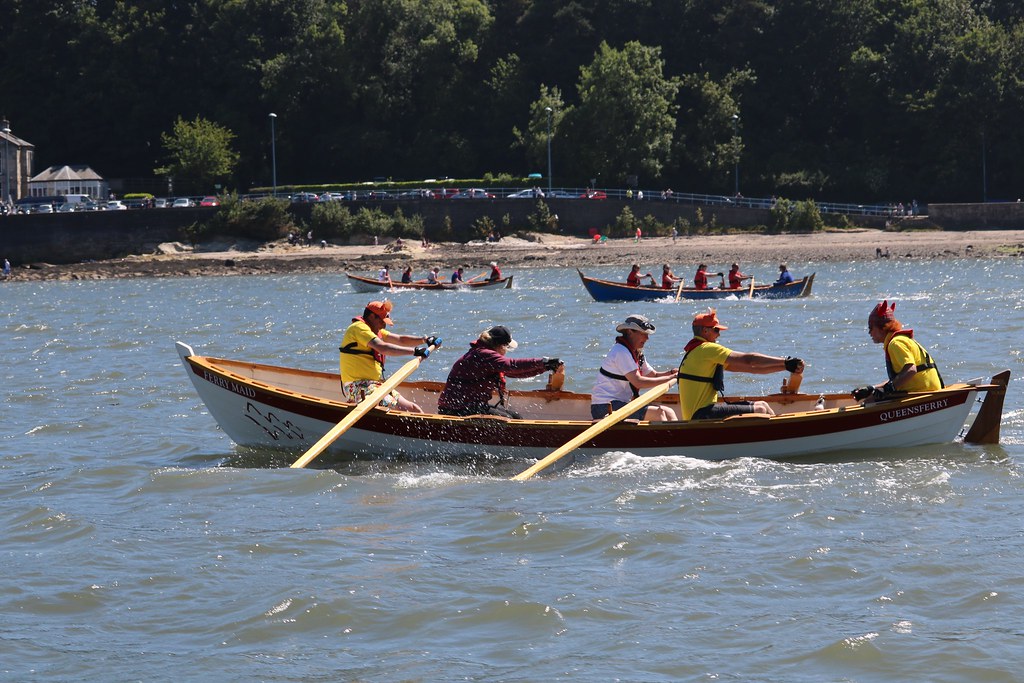Skills training process
Queensferry Rowing Club has approved a Training Schedule (drawn up by Mike McDowall) of 18 subjects (see below) which are considered relevant to the competence to be gained by members of the Club at whatever level they wish to aspire. The process of achieving that competence is noted below.
Competent Crew
All members of the Rowing Club are encouraged to develop their understanding, knowledge and experience at their own pace, using the self-assessment ‘sign-off’ sheet as a guide. (These are also available in the shed.)
Cox
Competent crew members who wish to become a Cox will undertake a day’s training course comprising a morning classroom session and an afternoon practical session on the water.
Skipper/Responsible Person
Cox members wishing to become a Skipper will undertake a 3-hour classroom session and complete an ‘open book’ written question paper. They will also be asked to consider and discuss their response to a practical scenario. Prospective Skippers must also complete five ‘buddy rows’ where their decisions and actions will be recorded and reviewed by an existing Skipper.
VHF Radio
An RYA approved course and examination necessary to obtain a Short Range Certificate to operate a VHF radio is run by Port Edgar Watersports. Members are encouraged (with a 50% subsidy on the fee) to obtain the certificate at Cox or Skipper level.

The training schedule for each level in the process, arranged by topic, is as follows:
1. Boat and Equipment
Crew – Familiar with the names of all the parts of the boat and the equipment needed to take the boat rowing.
Cox – Able to check the boat and all the items of gear and equipment are in place and in working order. Able to report defects verbally and in writing.
Skipper – Able to instruct on the names and use.

2. Launch & Recovery (practical)
Crew – Familiar with the procedure for launching and recovering the boat from the slip and for coming alongside.
Cox – Able to direct the launch and recovery procedure and be aware of risks and preventative or corrective actions.
Skipper – as above
3. Rowing Technique and Dynamics
Crew – Able to row efficiently and keep pace with the stroke. Understand the mechanics and the physical requirements.
Cox – Understand and utilise the ‘bias’ to starboard, the forward and back stroke capabilities of each and all oars, and the effect of wind and tide.
Skipper – as above
4. Rowing Orders
Crew – Understand and carry out all the orders required to control the boat.
Cox – Able to maintain command by issuing orders necessary to manoeuvre the boat safely, in a timely manner.
Skipper – Able to take over command if considered necessary.
5. Tides
Crew – N/A
Cox – Understand the cause of and pattern of high and low, spring and neap tides, and able to read the tide tables.
Skipper – Know how to predict tidal heights and flow rates and how to obtain information on tidal direction and constants.
6. Weather
Crew – Able to decide on the appropriate clothing to suit the conditions on the water, for the duration.
Cox – Able to obtain local weather information and by observation make decisions based on prevailing and possible future conditions. Understand and use the Beaufort scale to communicate information. Recognise a lee shore.
Skipper – Understand and recognise weather patterns and the effects of low and high pressure and frontal systems. Know the meaning of terms used in weather forecasts.

7. Local Knowledge
Crew – N/A
Cox – Tide: Understand the likely tidal direction and rate of flow at any part of the rowing area and the possible sea state. Weather: Understand the effect of wind and weather on the sea state and the boat’s capabilities, in any part of the rowing area. Hazards: Know places to avoid and areas where careful navigation is required. (shipping channels, rocks, sandbanks, lee shores, etc). Understand distances between points on the shores and across the river.
Skipper – Know the coastline and likely sea-bed for anchoring.
8. Knots and Bends
Crew – Able to tie a ‘figure of eight’, ‘reef knot’, ‘clove hitch’, ‘round turn and two half-hitches’, and ‘bowline’. Understand their uses and terminology. Able to coil and flake-out a rope.
Cox – Also able to tie a ‘sheet-bend’, ‘anchor-bend’ and ‘rolling-hitch’. Know their uses. Recognise different materials and types of rope and their characteristics.
Skipper – Able to instruct others in the making and use of knots.
9. VHF Radio
Crew – N/A
Cox – Understand the workings of a radio, the specific use of Ch 16 and the usual channels used by QRC. Able to send and receive messages under the direction of a licence holder or in an emergency.
Skipper – Pass a recognised exam and hold a current VHF certificate. Able to use the phonetic alphabet.
10. Safety
Crew – Understand the function of a lifejacket. Understand the significance of ‘cold-water shock’.
Cox – Build awareness of all the potential risks associated with boat/rowing operations. Know the contents of the ‘grab-bag’ and how to use them.
Skipper – Able to recognise and advise on all potential risks and preventative or corrective measures.
11. Rules of the Road
Crew – N/A
Cox – Know the International Regulation for the Prevention of Collision and Sea and how to apply them.
Skipper – Understand the rules for sailing boats and be able to anticipate possible movements afloat.

12. Man overboard procedure
Crew – Understand the procedure by participating in a man overboard exercise as a crew member.
Cox – Able to direct a man overboard procedure being aware of sea state, wind and tide.
Skipper – Able to direct a man overboard procedure and explain the reasons for certain actions, and what to avoid.
13. Anchor work
Crew – Understand the process of laying and lifting the grapnel anchor.
Cox – Able to direct the laying and lifting of the grapnel anchor and manoeuvre the boat accordingly.
Skipper – As above and able to determine the length of chain/rope required, explain the reasons for certain actions and safety issues. Recognise the different types of anchor.
14. Towing and being Towed (practical)
Crew – Understand the procedure for picking up a tow.
Cox – Able to direct the preparation and execution of the operation safely.
Skipper – N/A
15. Manoeuvring (practical)
Crew – Able to row efficiently and respond correctly to orders.
Cox – Able to direct the movement of the boat in open water and confined spaces safely with regard to sea state, wind and tide and other water users.
Skipper – N/A
16. Passage Planning
Crew – N/A
Cox – N/A
Skipper – Able to understand and implement the requirements of an effective passage plan. Recognise the information required and where to obtain it and how to communicate the plan to others.
17. Chartwork
Crew – N/A
Cox – Know what information is available on charts and local handbooks.
Skipper – Able to interpret and use information on charts, etc, to inform decision-making when considering making any passage, manoeuvring or anchoring. Able to fix a compass position. Recognise channel and other navigation marks.
18. Command
Crew – N/A
Cox – Understand the benefits of a positive, friendly and authoritative manner.
Skipper – Able to explain the benefits.
19. Racing Rules and Tactics
Crew – Able to execute a racing start and turn.
Cox – Able to maintain position during a start and avoid potential dangerous situations throughout the race. Know the reason for, and be able to establish and keep a transit. Understand the SCRA Rules of Racing. Understand simple tactics. Able to direct and motivate the crew and give clear information or instruction.
Skipper – N/A.

And finally, the skills required at each level:
Competent crew
- Familiar with the names of all the parts of the boat and the equipment needed to take the boat rowing.
- Familiar with the procedure for launching and recovering the boat from the slip and for coming alongside.
- Able to row efficiently and keep pace with the stroke. Understand the mechanics and the physical requirements.
- Understand and carry out all the orders required to control the boat.
- Able to decide on the appropriate clothing to suit the conditions on the water, for the duration.
- Able to tie a ‘figure of eight’, ‘reef knot’, ‘clove hitch’, ‘round turn and two half-hitches’, and ‘bowline’. – Understand their uses and terminology. Able to coil and flake-out a rope.
- Understand the function of a lifejacket. Understand the significance of ‘cold-water shock’.
- Understand the procedure by participating in a man overboard exercise as a crew member.
- Understand the process of laying and lifting the grapnel anchor.
- Understand the procedure for picking up a tow.
- Able to row efficiently and respond correctly to orders.
- Able to execute a racing start and turn.
Cox
- Able to check the boat and all the items of gear and equipment are in place and in working order. Able to report defects verbally and in writing.
- Able to direct the launch and recovery procedure and be aware of risks and preventative or corrective actions.
- Understand and utilise the ‘bias’ to starboard, the forward and back stroke capabilities of each and all oars, and the effect of wind and tide.
- Able to maintain command by issuing orders necessary to manoeuvre the boat safely, in a timely manner.
- Understand the cause of and pattern of high and low, spring and neap tides and able to read the tide tables.
- Able to obtain local weather information and by observation make decisions based on prevailing and possible future conditions. Understand and use the Beaufort scale to communicate information. Recognise a lee shore.
- Tide: Understand the likely tidal direction and rate of flow at any part of the rowing area and the possible sea state.
- Weather: Understand the effect of wind and weather on the sea state and the boat’s capabilities, in any part of the rowing area.
- Hazards: Know places to avoid and areas where careful navigation is required. (shipping channels, rocks, sandbanks, lee shores, etc). Understand distances between points on the shores and across the river.
- Also able to tie a ‘sheet-bend’, ‘anchor-bend’ and ‘rolling-hitch’. Know their uses. Recognise different materials and types of rope and their characteristics.
- Understand the workings of a radio, the specific use of Channel 16 and the usual channels used by QRC. Able to send and receive messages under the direction of a licence holder or in an emergency.
- Build awareness of all the potential risks associated with boat/rowing operations. Know the contents of the ‘grab-bag’ and how to use them.
- Know the International Regulation for the Prevention of Collision and Sea and how to apply them.
- Able to direct a man overboard procedure being aware of sea state, wind and tide.
- Able to direct the laying and lifting of the grapnel anchor and manoeuvre the boat accordingly. Recognise the different types of anchor.
- Able to direct the preparation and execution of a tow safely.
- Able to direct the movement of the boat in open water and confined spaces safely with regard to sea state, wind and tide and other water users.
- Know what information is available on charts and local handbooks.
- Understand the benefits of a positive, friendly and authoritative manner.
- Racing: Able to maintain position during a start and avoid potential dangerous situations throughout the race. Know the reason for, and be able to establish and keep a transit. Understand the SCRA Rules of Racing. Understand simple tactics. Able to direct and motivate the crew and give clear information or instruction.
Skipper
- Able to instruct on the names and use of all parts of the boat and equipment.
- Able to take over command if considered necessary.
- Know how to predict tidal heights and flow rates and how to obtain information on tidal direction and constants.
- Understand and recognise weather patterns and the effects of low and high pressure and frontal systems. Know the meaning of terms used in weather forecasts.
- Know the coastline and likely sea-bed for anchoring.
- Able to instruct others in the making and use of knots.
- Pass a recognised exam and hold a current VHF certificate. Able to use the phonetic alphabet.
- Able to recognise and advise on all potential risks and preventative or corrective measures.
- Understand the rules for sailing boats and be able to anticipate possible movements afloat.
- Able to direct a man overboard procedure and explain the reasons for certain actions, and what to avoid.
- As above and able to determine the length of chain/rope required, explain the reasons for certain actions and safety issues.
- Able to understand and implement the requirements of an effective passage plan. Recognise the information required and where to obtain it and how to communicate the plan to others.
- Able to interpret and use information on charts, etc, to inform decision-making when considering making any passage, manoeuvring or anchoring. Able to fix a compass position. Recognise channel and other navigation marks.
- Able to explain the attributes of command.
PDFs with all the above information can be downloaded by clicking on the links below, and are also available on the Documents page.
Training Schedule arranged by levels
Training Schedule arranged by topic


